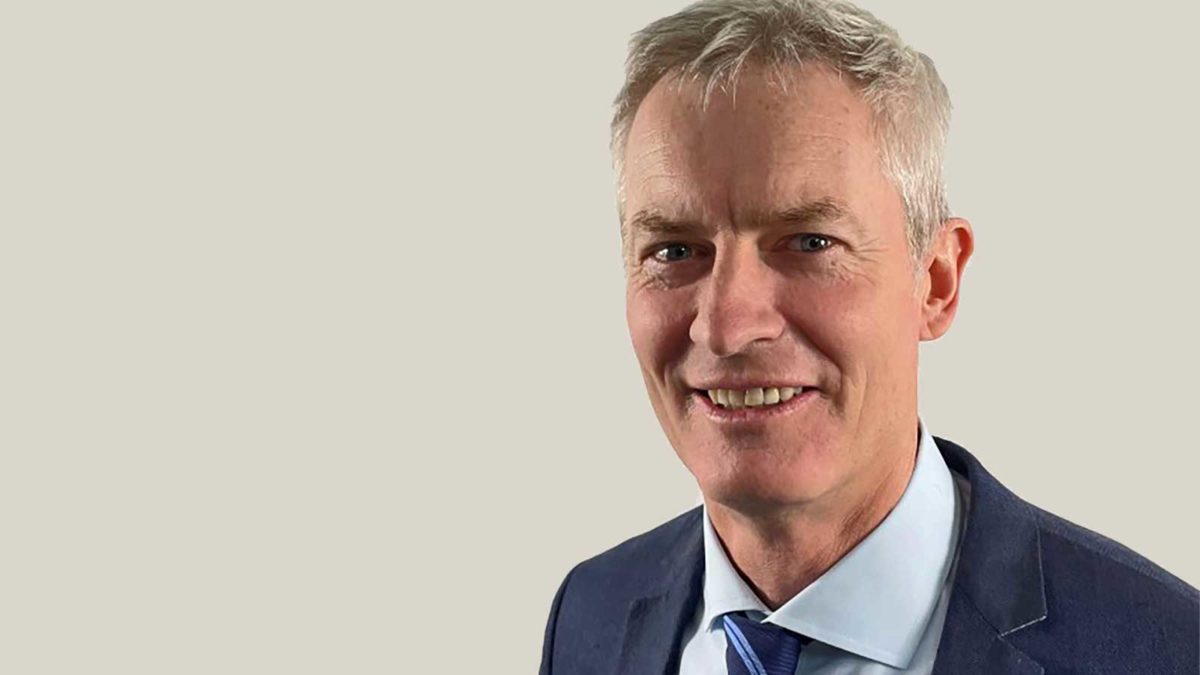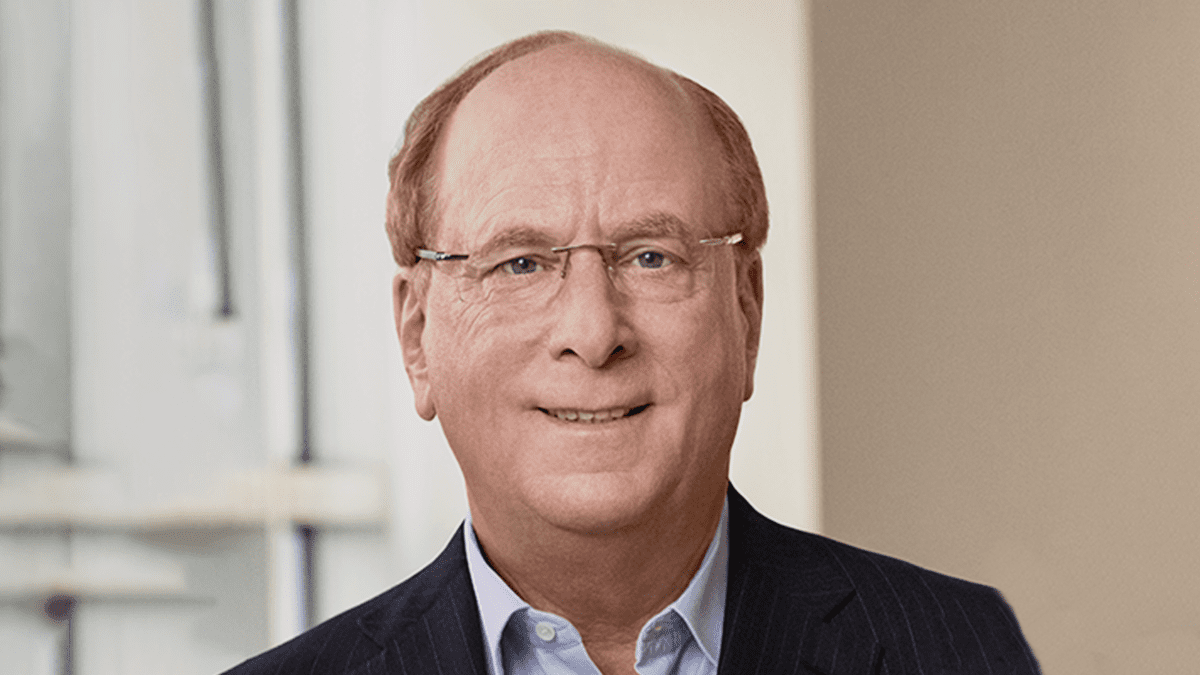Hunting the ten-bagger rock-kickers with Lowell
The resources exploration-project development end of the Australian Securities Exchange (ASX) is an exciting place to spend time; one really gets a sense of how the share market kicked-off in Australia in the 1850s, when no boomtime goldfield town was complete without its own stock exchange.
It is, potentially, the home of the multi-bagger – and also, the home of the major “bust.”
One of the most experienced investors in the space is John Forwood, portfolio manager of the Lowell Resources Fund (LRT), a listed investment company (LIC) that was listed on the ASX in March 2018 (Lowell Resources Funds Management bought the management rights to the fund in January 2004.)
A qualified lawyer and geologist, Forwood certainly has the skill-based and experience to navigate the minefield of small-cap resource investing. He has worked in exploration and development geology in Australia, Tanzania and Indonesia, and then a significant stint working as a financier of equity, structured quasi-equity and project finance to the junior resources sector; he has managed the Melbourne-based Lowell Resources Fund as chief investment officer since 2016.
In its 30 June 2021 update, LRT gave unitholders the following performance table, showing its performance against the S&P/ASX Small Resources Index (XSRD), the S&P/ASX Resources 300 Index and the S&P/ASX 200 Index over one, five and ten-year periods. LIC, ETF and LIT (listed investment trust) research firm Risk Return Metrics ranked LRT the number-one stock across the entire LIC/LIT sector in its June 2021 LIC/LIT report.
| Total Portfolio Performance to 31 May 2021 | LRT Change in NAV per unit incl distributions | S&P/ASX Small Resources Index (XSRD) | S&P ASX Resources 300 Index | S&P/ASX 200 Index |
| 12 months | 45.9% | +32.2% | 32.3% | 27.8% |
| 5 years p.a. | 22.1% pa | +11.2% pa | 19.0% pa | 11.2% pa |
| 10 years p.a. | 12.9% pa | -5.0% pa | 3.2% pa | 9.3% pa |
As at 30 June, the Fund’s portfolio was weighted 44% in gold-and platinum group metals (PGM)-focused exploration and mining stocks, with the largest single holding being 6.7% of the fund in Musgrave Minerals (ASX: MGV), which is developing its wholly owned Cue gold project in Western Australia.
The top ten holdings are:
| Company | ASX code | Commodity | Major project | % of gross investments |
| Cash | n/a | Cash | n.a | 11.2 |
| Musgrave Minerals | MGV | Gold | Cue, Western Australia | 6.7 |
| Predictive Discovery | PDI | Gold | Bankan, Guinea | 6.6 |
| De Grey Mining | DEG | Gold | Hemi, Western Australia | 5.7 |
| Caravel Minerals | CVV | Copper | Caravel, Western Australia | 5.7 |
| Lefroy Exploration | LEX | Gold | Burns, Western Australia | 5.3 |
| Centaurus Metals | CTM | Nickel | Jaguar, Brazil | 5.2 |
| Genesis Minerals | GMD | Gold | Ulysses, Western Australia | 5.1 |
| Talon Minerals | Listed in Toronto | Nickel | Tamarack South & North, Minnesota, USA | 3.7 |
| Karoon Energy | KAR | Oil & gas | Patola, Santos Basin, offshore Brazil | 3.5 |
Number of investments: 61
Unlisted investments: 6%
Average market capitalisation of investee companies: $97 million
The Inside Investor caught up with John Forwood recently for a chat.
What is the style of the fund, and what is its universe?
It’s a deep-value equity fund that specialises in the junior resources sector. Within that, it is a pretty broad focus, we can look at pretty much any commodity and we can look anywhere in the world, in terms of where it might be listed, Canada or wherever. We do everything from precious metals, right through to oil and gas. Generally, the fund is focused on companies that have projects that are pre-development. We have a little bit of exposure to production, mainly from oil and gas, which only makes up less than 10% of the fund. But as a general rule, we look to not get involved in development risk: the reason for that is because we’re generally investing in junior one-project companies, where often their skill set is in exploration/feasibility work. Development is often a bit of a leap for these one-project companies with modest market capitalisations, and that’s a completely different bucket of risk, in terms of building and commissioning and running a project.
Is that a philosophy whereby you can capture leverage to the commodity price; whereas, once the company is producing, the market becomes fixated on production rates and grades and costs and ‘trouble at the mill,’ that kind of thing?
Indeed. Partly because of our backgrounds, we like to take that extra risk – the exploration sector is a super-risky sector, but we have a high hurdle-rate in terms of what we have to see as the potential of an investment. We say, ‘has this got the potential to be a 10-bagger?’ Because, if you’re taking all that risk, you want to see the potential for big returns. Most of the time, you won’t get those big returns, in fact you might not get your money back – but every now and again, you come along with that 10-plus-bagger, and that’s where you get your performance.
It’s quite interesting, John, that the portfolio is still almost half precious metals, when most people would assume that the biggest game in town at the moment is battery metals?
It’s partly just the practicalities, in that if you’re investing in junior resource and exploration, at least half of the investment opportunities are precious metals, and predominantly gold, in Australia. But also, we are positive on gold in the medium and longer term. We’re investing over the next three-to-five-year horizon. We like gold, it’s relatively simple to explore for, and the market can believe that it’s viable for a junior to develop a gold mine. You can have a wonderful magnetite iron ore project, but if the market sees that it has a capital ‘ticket’ of, say, $1 billion, you’re not going to get much traction in the market, and you’ll end up trading at a huge discount to the net present value (NPV) of the underlying project.
Whereas, if you’ve got a gold project and put some next scoping economics around it, at the moment you’ll trade at maybe 20% or 30% of the NPV of that project, until it gets built. But for something that’s got a huge capital requirement, and you’ve got a market cap of $50 million, at the moment the market just won’t give you too much credence in terms of faith that you’ll be able to develop it; and if it is to go ahead, you may have to sell it for a cheap price. Gold is generally lower capital numbers – for that sort of ‘magic’ level of one million ounces of resources, 100,000 ounces a year of production, we’ve seen a number of those sort of projects recently built for $100 million or even less. That’s generally well within the capital capabilities of a junior company.
Is that the philosophy, to buy-in at that 25 to 30% of NPV level?
We like to get in earlier than that. Generally, we will get in where there is a sniff of an economic deposit – there might have been one or two intersections or some really prospective geology, but it all depends on the valuation. There’s plenty of companies that have got that prospectivity, but we see their valuation as too high. We try to get in at a much lower level than 25% of a possible NPV – something that the market has ignored, or doesn’t believe in.
Just back to that battery minerals allocation, is lithium, for example, something, that you think there’s too much hype about? Is that something where you just think, ‘that’ll all sort itself out, who gets to production and at what price – we just know gold better and are more prepared to fund gold?’
No. Actually, the fund has done superbly well out of some lithium investments, firstly through Kidman Resources (taken over by Wesfarmers in September 2019) and then more recently through Liontown Resources (ASX: LTR), both with big hard-rock lithium projects in WA. We just saw the prices for both of those getting to the point where we thought they were becoming very well-valued. We’re never going to pick the top, but Liontown was a 20-bagger for us, and it was just too good not to take profits.
It comes back to the capabilities of junior companies; hard-rock lithium has been proven to be something that junior companies can develop within their capital capabilities. It’s not high-tech stuff, and it’s not high-capital stuff; we’re actively looking to bring a lithium exposure back into the fund.
What about the rare earths? You mentioned in your monthly update in May that you’d gone into Australian Rare Earths (ASX: AR3), which listed on July 1. Everyone’s talking about rare earths and battery metals and renewable energy and electrification; I would regard you as some of the most hard-headed investors in the space, but you don’t seem to be into that hype as much as a lot of others?
We’ve been very cautious on rare earths. If gold is the low-risk end of the sector, then rare earths is at the other end of it. Generally, from a metallurgical processing point, most of them are very complex. Then, in terms of the market, the Chinese absolutely control the market – and they have tanked the rare earths pricing before.
It’s a risky commodity, but what we like about Australian Rare Earths is (a) the jurisdiction, South Australia, the sovereign risk is very well-known and relatively easy, and (b) the metallurgy is apparently fantastic. They can extract the majority of rare earths just using seawater – it’s basically just a brine with some high salt content, and literally in minutes, you get 50% of the rare earths coming off into solution. Most of the other rare earths projects have got really nasty, strong acids and precipitation and clarification and purification going on every step of the way; but we think Australian Rare Earths’ Koppamurra has a lot of advantages. It looks to be quite a rare deposit.
What about things like fertilisers, what about all these new sulphate of potash (SoP) candidates, which are all very sexy – are you participating in that area?
Exactly. Australia’s a big agricultural country, and crying out for home-grown production of fertilisers, especially of SoP fertiliser. We have been in some of the Australian projects in the past. Given we’re looking for the 10-baggers, and generally some of these projects have moved through to where it’s not really geological risk anymore, it’s getting toward production risk, some of them moved past our timeframe sweet-spot. But the project we do have, South Harz Potash (ASX: SHP) in Germany, while it does have a big capital ticket of hundreds of millions of dollars potentially (they haven’t released the scoping study yet because they need to move resources from inferred to indicated classification); the NPVs on those projects potentially are a hundred times what the market cap was when we got in. And it’s Germany; did people think of that as a mining jurisdiction? Absolutely not. But those projects have been mined in the past, when they were part of East Germany. Despite the sizeable capital requirement, we liked the risk-return on that one.
Do you think – and it seems like you might, from your portfolio, that ultimately nickel and copper, are going to be just as good, if not better, ways to play the electrification and renewable energy themes than the exotics such as rare earths?
Absolutely. Copper is not a battery metal, but it’s required for all electrification – for example, there’s at least three times the amount of copper required in an electric vehicle (EV) as in an internal combustion engine. So, copper absolutely is the way to go, in terms of playing across the space, and not just the EVs; and nickel, to a much lesser extent, but if you talk about NMC (nickel-manganese-cobalt) battery chemistry, 8:1:1 in terms of nickel, it’s gone the other way, there’s now a much lower ration of cobalt. And manganese is not really in short supply.
But nickel, if you just look at what Elon Musk is hoping to do by 2030, demand for nickel just from Tesla (NASDAQ: TLSA) will be an order of magnitude greater than what world supply is at the moment. Will that eventuate? No, it’s unlikely, but the trend is there, and on top of that, the market says, ‘I want my nickel-containing battery to have green credentials.’ In that regard, nickel sulphide, which is where we like to invest, has a much lower energy burden to get that nickel into battery-grade nickel than, say, a nickel laterite or other types of nickel. So, we like nickel sulphide projects, but they’re becoming much harder to find.
Any graphite?
We have a little bit of graphite in a company that’s active in Africa, but it has gold projects and graphite projects, and we classify it under the gold side of things. We’ve done fantastically with graphite in in the past, through Syrah Resources (ASX: SYR), and that really bore out our investment thesis – we had a great run there, staying in through to feasibility study stage. When they reached the construction, commissioning and production stages, they hit all sorts of teething problems; but we had exited by that point. But we do have a soft spot for graphite.
It’s interesting, John, the way the mining industry is reacting to ESG and trying to say, ‘Well, look, the brave new world of renewables and electrification and all the rest, quite simply, it’s going to need massive amounts of metals.’ But with your oil and gas exposure where it is, some hardline ESG investors would say, ‘we don’t want to be in Lowell because they invest in fossil-fuels.’ How difficult is it to chart that path between, ultimately, we’re talking about raw materials, and (b) wanting to have some sort of attraction to that kind of investor?
Certainly, it’s an issue that we grapple with, increasingly. To that kind of investor, you’d say, ‘Well, what about say BP? A big oil company saying, ‘Oh look, we’re not going to produce any more oil, we’re only going to produce renewable energy’ – that’s not really going to do anything in the near term, because you and I, if we’ve got an internal combustion car, we’re not going to think, ‘Oh, BP is not going to sell me petrol any more, I won’t buy any more petrol.’ We’re simply going to go to a Shell or Ampol service station. There’s that argument, that at the moment, it’s not moving the needle.
We’ve seen this in a number of industries; 40 years ago, it was tobacco that was on the nose, and then 20 years ago, it was coal – we’ve seen BHP finally move out of thermal coal, and now it is oil and gas which is feeling the ‘decarbonisation’ pressure. We will continue to evaluate whether we want to continue to be in that space. A number of financial institutions, particularly banks, who are signed-up to the Equator Principles are refusing to lend to the fossil-fuel sector anymore. It does create opportunities, there’s no question about that. Those companies will be trading at discounts because they’ve got to pay more for their finance, but some might still make good money.
What about fund housekeeping in terms of number of stocks, maximum/minimum, cash maximum/minimum?
We grapple with that constantly. The number of stocks in our portfolio is a lot, it’s around 60 at the moment. Some of them are unlisted, and they don’t require much management review or involvement. Our model is different to some of our peers in that we don’t get involved in management, generally we don’t take more than a 5% stake. Because we’re small, we can take a sub-5% stake, and if it goes well it will still move the needle substantially for us. Whereas, the contrasting model might be ‘OK, let’s get in boots-and-all and have 50% of a company, and put a number of our people on the board.’ We have no interest in that; we just want to find good management, and back them to do their jobs, because we don’t have the time or the expertise to do that. The benefit at the back-end for us is that these companies are craypots – easy to get into, but very hard to get out of – but if you have less than 5%, generally, in most normal markets, there’s enough liquidity to get out in a reasonable timeframe without tanking the market in that stock. We like that model, but it wouldn’t work for a fund with billions of dollars in it, because they’ve got to find big stocks into which to deploy all that capital. And there are a lot more little companies than there are BHPs. Funds with billions of dollars to invest can find it hard to find investments, but that’s not the case with us.
Given that you’ve got unlisted investments, that surprised me, I thought you had a lot less positions. I thought you were actually quite concentrated in how many positions you actually had.
There’s a long tail in our portfolio. There’s a lot of stocks in the bottom drawer. But that’s the nature of the business. If you like the projects and think that the management’s got good skills and commitment, it can take years. Predictive Discovery, which is still one of our absolute standout stocks, has been listed for more than ten years. We invested in the IPO, and we’ve invested a number of times along the way, because we believed in the management and their model. Finally, after ten years, they’ve made wonderful discoveries in Guinea, West Africa, and they’ve been a 10-bagger since we put our last money in. You’ve got to back the management. But Predictive Discovery was in the bottom drawer for a long time.
You’ve got to have a reasonable breadth of exposures. That’s what our investors are looking for, they can’t do this themselves, they might pick one or two stocks, get into Penny Dreadful NL, because they hear it’s going to the moon, but it might also disappear out the back door. It’s the portfolio approach – we’re taking risks with individual stocks, but in a basket sense, it’s not as risky.
What’s the maximum cash weighting?
It’s up around 25%, but we never really get near that. We like to keep our cash at somewhere around 5%-10%. We boosted our cash leading up to 30 June because we knew we were going to have a big cash distribution, a 15-cent distribution, about 10% of NAV. So we boosted our cash up to more than 10%. There’s a distribution reinvestment plan, so some of that, about 50% of it, will probably be reinvested.









